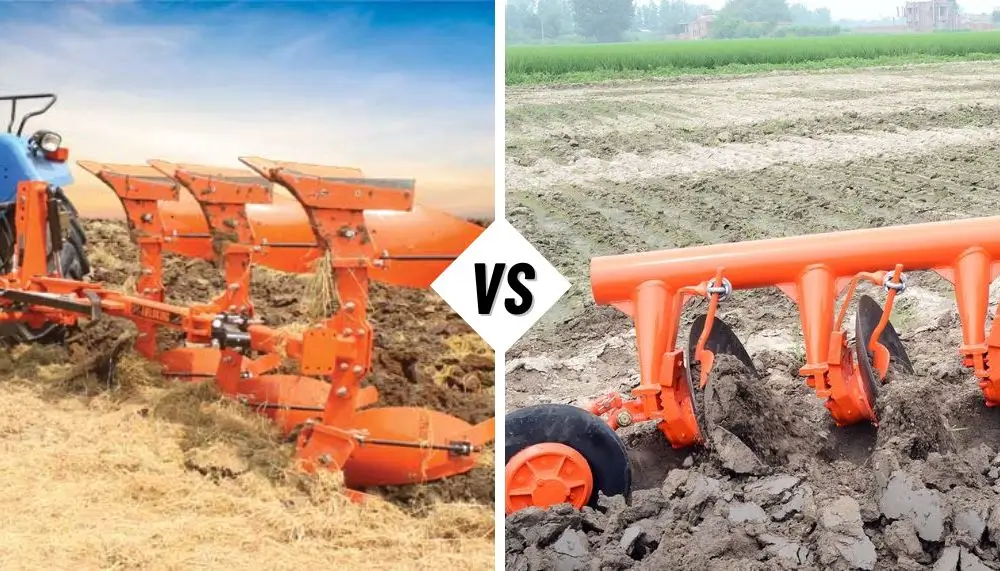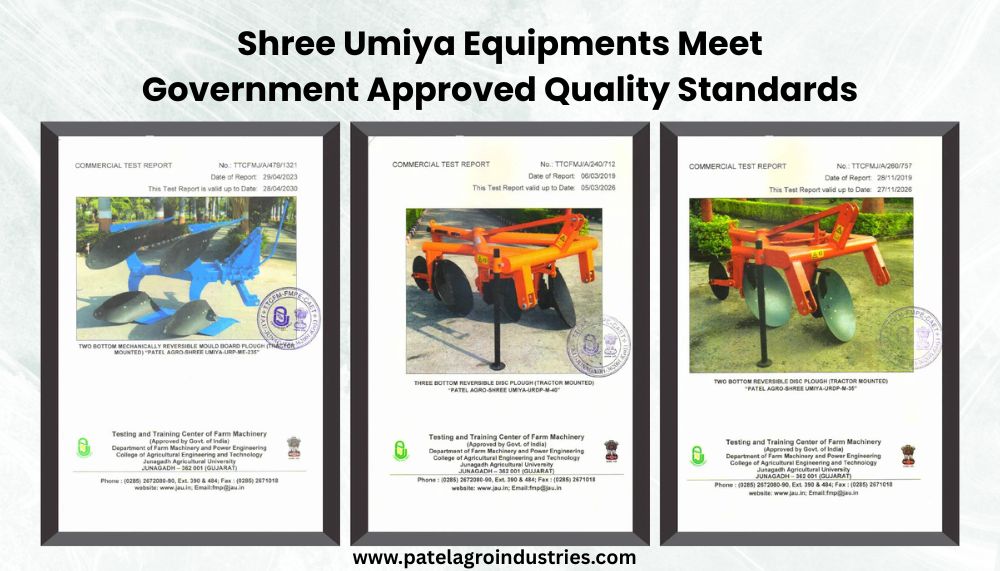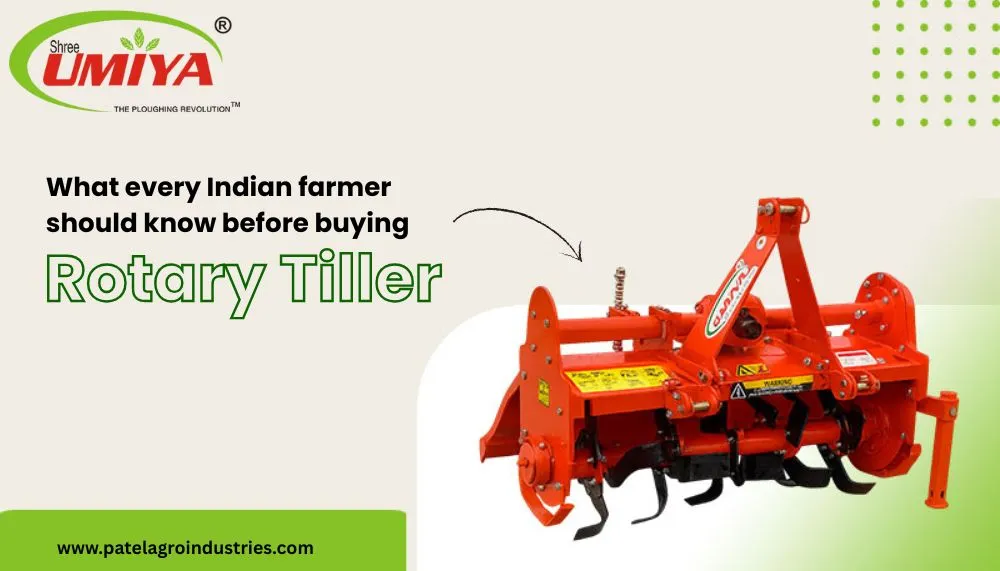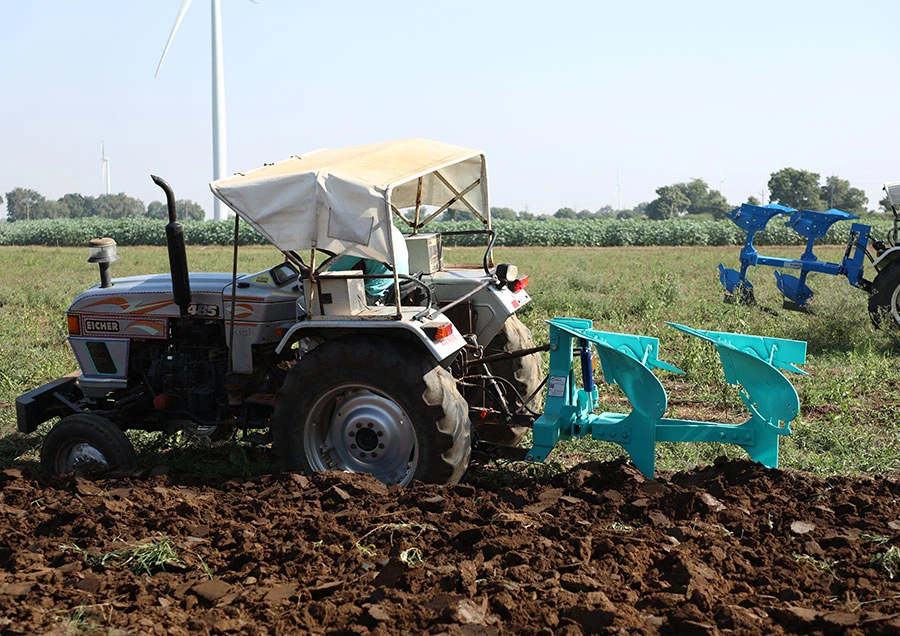Chat With Us
+91 99253 37969Disc Plough And Mouldboard Plough: Which is Best for Your Field?

Ploughing is a vital process in agriculture before sowing of seeds. It is a method of soil preparation to craft a suitable surface for plantation. Disc plough and mouldboard plough are the two most common machineries that are implemented across the globe for enhanced ploughing. Both have the potential to provide exceptional results but in different conditions.
So, which one is beneficial over the other? And which one should you choose for your field? Let's find the answer through a comprehensive differentiation between disc plough and mouldboard plough.
A Comprehensive Differentiation Between Disc Plough and MB Plough
What is a Disc Plough?
Disc plough is one of the most useful farm implementation used for primary tillage activity and soil preparation by farmers. It has a unique design and mechanism of action. The plough consists of a series of disc shaped metal cutters attached to a horizontal shaft. This kind of arrangement of blades results in enhanced performance by creating a stiff angle with the soil.
Using the angle, blades can dig deep into the soil and invert prominently. Disc plough works on the principle of cutting and turning. The sharp blade cuts the tough soil into fine clods and turns it around through the concavity. Hence, it can provide better results in stony and stubborn areas.
Structural Details Of Disc Plough
Frame: Frame is the main structural support of disc plough that provides stability to the overall machinery. It is made of cast iron and can be mounted to a tractor.
Disc: Discs are the key functional elements. These are concave cast iron blades attached to a horizontal shaft. Number of discs can vary according to requirements and ranges between 2-12 discs.
Horizontal Shaft: The shaft provides an axis of rotation for the discs. It plays a pivotal role in creating the much needed angle for cutting the soil.
Bearings: Bearings are the components used to smoothening the movement of blades. It prevents the accumulation of dirt and debris.
Benefits of Disc Plough
- It has the capability of digging deep into the soil which is very useful for stony and rough areas.
- It provides adjustable cutting depths. It enables farmers to customize tillage activity.
- Their sturdy construction provides diverse applications in both flat and uneven surfaces.
- It minimizes soil erosion and promotes sustainable management.
- Disc plough helps in aeration of soil with minimal clogging.
What is Mouldboard Plough?
Mouldboard plough is one of the conventional machineries used for soil preparation. Unlike disc plough, a MB plough uses a single mouldboard to cut and invert the soil. This plough is crafted using steel and has a sharp age to pierce the soil. The mouldboard plough has a to-and-fro action that provides effective churning of the soil.
The principle of working involved horizontal cutting of the upper layer. The metallic blade penetrates the soil horizontally and hydraulic pressure created by the tractor pulls it out and the process repeats. As a result of this action the soil breaks and inversion.
Structural Components Of Mouldboard Plough
Moldboard: The primary cutting component of the plough, usually made of metal, curved, and shaped like a moldboard. It slices through the soil horizontally for lifting and turning it over.
Share: The share is the blade that cuts into the soil ahead of the moldboard. It helps to create a furrow for the moldboard to work in.
Beam: The beam is the main structural element of the plough. It provides support and stability. It connects the moldboard and share to the hitch or frame of the plough.
Handles or Hitch: These are the points where the plough is attached to the tractor. They provide the means to pull the plough through the soil.
Landside: The landside is the vertical plate on the side of the plough that helps guide it through the soil and provides stability.
Depth Wheel: Some moldboard ploughs feature a depth wheel, which can be adjusted to control the depth at which the plough operates in the soil.
Benefits of Mouldboard Plough
- MB plough is beneficial for marshy areas. It enhances the drainage quality of soil.
- It helps in complete inversion of soil. Hence, provide an even distribution of humus and organic matter on the top soil.
- The rigorous inversion technique also helps in weed control.
Competitive Analysis Between Disc Plough and MB Plough:
| Aspects | Disc Plough | MB Plough |
| Cutting Mechanism | Multiple concave discs mounted on a horizontal shaft | Single Mouldboard |
| Soil Turning | Cuts and turns soil at an angle | Lifts and completely overturns soil |
| Depth Adjustment | Adjustable cutting depth settings | Typically has depth wheel for depth adjustment |
| Soil Penetration | Effective in various soil types, including heavy clay soils | Effective in breaking up compacted soil, may struggle in rocky terrain |
| Weed Incorporation | Incorporates surface vegetation and crop residues into soil | Buries weeds and crop residues beneath inverted soil |
| Soil Aeration | Helps improve soil aeration and structure | Enhances soil aeration by turning over soil layers |
| Versatility | Suitable for flat and uneven terrain | Less versatile, may be more suitable for certain soil types |
| Modern Usage | Commonly used in modern agriculture | Still used in traditional and specific agricultural contexts |
Takeaway
In conclusion, both disc plough and mouldboard plough have their own strengths and weaknesses. Therefore, the selection of plough depends on your requirements and soil type.
However, you need to analyze the benefits and mechanism of the plough thoroughly before purchasing. If you have any doubts regarding the selection of the right plough for your field, feel free to connect with us.





